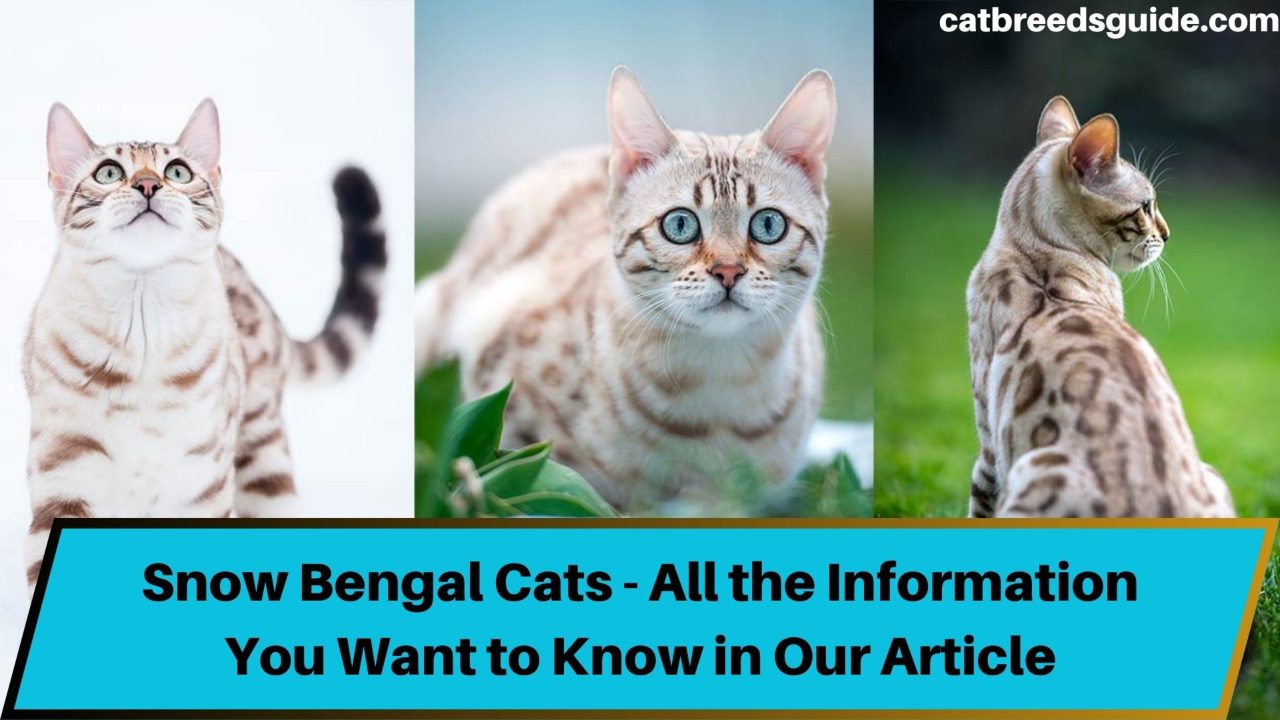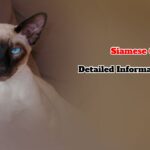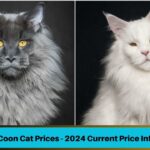Snow Bengal Cats are the epitome of elegance, blending the captivating charm of Bengal cats with a unique color palette. Their fur, reminiscent of a snowy tableau with shades of white, cream, and light gray, makes them stand out.
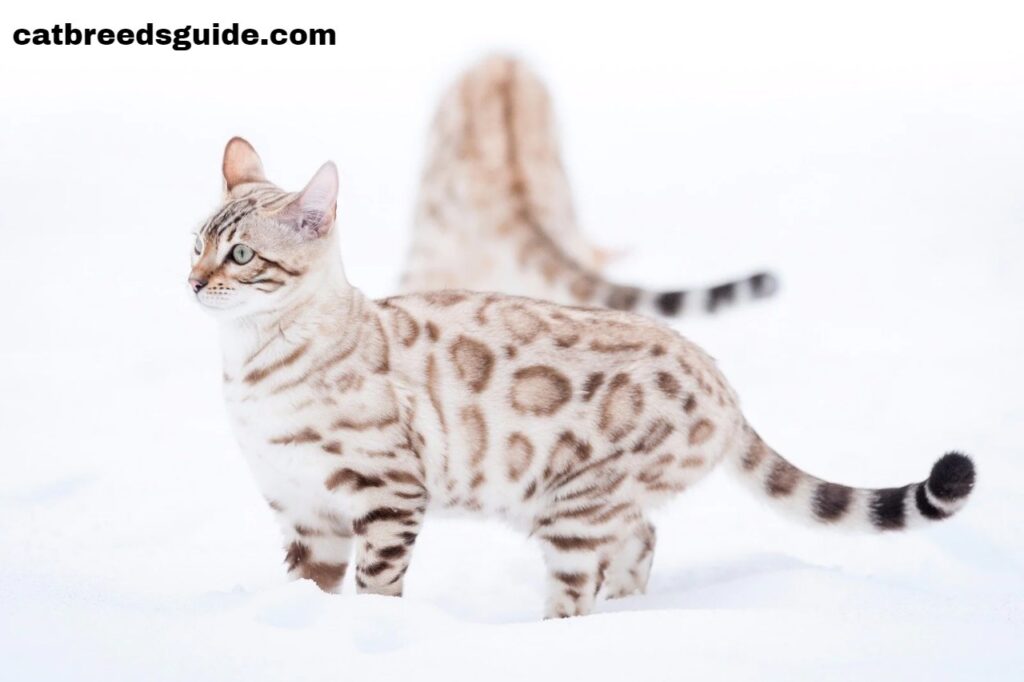
These felines share the playful and intelligent nature of Bengal cats, showcasing rare spotted or marbled patterns. Beyond their visual appeal, Snow Bengals are known for being affectionate and family-friendly, actively participating in household activities.

With brilliant blue or green eyes complementing their snowflake patterns, Snow Bengal Cats bring an enchanting touch to any home. For those seeking an exotic and elegant feline companion, the rare beauty and charming personalities of Snow Bengals make them a delightful choice for pet adoption.

Snow Bengal Cats: Comprehensive Information
| Feature | Description |
|---|---|
| Coat Colors | White, cream, and light gray tones. Often with spotted or marbled patterns. |
| Eye Color | Bright blue or green eyes that perfectly complement the snowflake patterns. |
| Personality | Lively, intelligent, and playful nature. Family-friendly and affectionate. |
| Genetic Traits | Carries unique traits of Bengal cats. Known for rare color combinations. |
| History | Snow Bengal Cats are bred by mating with Bengal cats. |
| Exotic Cat Friendly | Perfect choice for those seeking an exotic and elegant cat for home. |
| Physical Activity Needs | Requires regular physical activity due to playful and social nature. |
| Health and Care | Maintaining a healthy diet and regular veterinary check-ups are crucial for their well-being. |
| Adaptability to Home | Easily adapts to home life with a family-friendly and affectionate nature. |
| Trainability | Their intelligence allows them to learn basic training commands successfully. |
Snow Bengal Cats: Colors and Patterns
Snow Bengal Cats are a captivating breed known for their stunning coat colors and patterns. These feline beauties have a unique genetic makeup that sets them apart from other domestic cats. In this article, we’ll explore the various colors and patterns that make Snow Bengals a favorite among cat enthusiasts.
Colors
Seal Lynx Point Snow Bengals
Seal Lynx Point Snow Bengals exhibit a light cream background with distinct seal-colored points, including the ears, face, paws, and tail. Their blue or aqua-colored eyes add an enchanting touch to their appearance.

Seal Mink Snow Bengals
Seal Mink Snow Bengals feature a slightly darker coat compared to the Lynx Point variety. The background color is a warm ivory, and their points are a rich cocoa or coffee shade. Their eyes can range from blue-green to a mesmerizing aqua hue.

Seal Sepia Snow Bengals
Seal Sepia Snow Bengals have a coat with a golden or light tan background and dark brown points. Their eyes, like the Mink variety, can vary in shades of blue-green or aqua. The overall effect is a luxurious and exotic appearance.

Patterns
Spotted Snow Bengals
Spotted Snow Bengals showcase a distinctive spotted pattern on their coat. The spots can vary in size and distribution, creating a visually striking and dynamic look. This pattern is a favorite among Bengal enthusiasts for its wild and playful appearance.
Marbled Snow Bengals
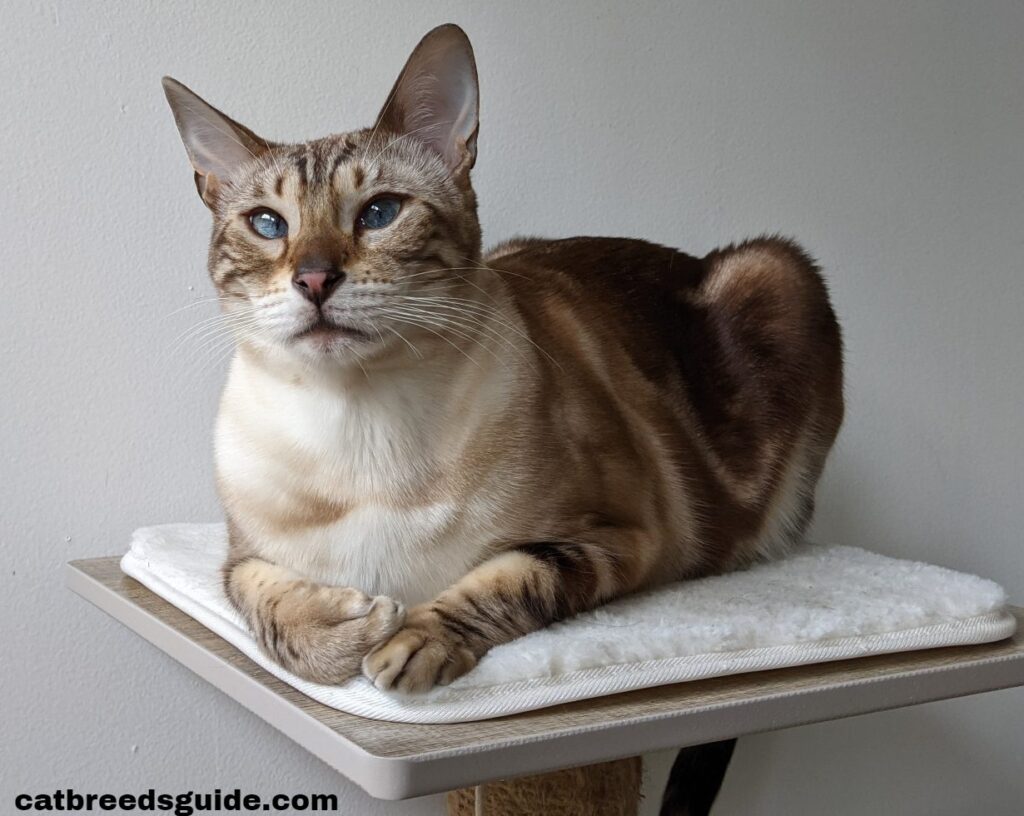
Marbled Snow Bengals boast a unique swirling or marbled pattern on their coat. This intricate design gives the illusion of a wild cat’s coat, reminiscent of the patterns found in nature. The contrast between the base color and the marbled pattern adds to their allure.
Our Other Related Articles
- Spotted Cat Breeds
- Why Do Cats Make Biscuits?
- How Many Breeds of Cats Are There?
- Snow Cat: Detailed Guide to Snow Leopards
Are Snow Bengals Rare?
Bengal cats are celebrated for their unique coat patterns, and among them, Snow Bengals are particularly prized for their resemblance to the snow leopard. These cats, also known as Seal Lynx Point, Seal Mink, and Seal Sepia Bengals, possess a distinctive genetic makeup that sets them apart. But what makes them rare?
Snow Bengals are considered rare due to the intricate combination of Bengal and Siamese genes required to achieve their snow-like coloration. The limited availability of cats with these specific genetic traits, combined with high demand from cat enthusiasts, contributes to their rarity in the feline world.
While Snow Bengals may not be as common as traditional Bengal varieties, their scarcity is subjective and can vary by region. Reputable breeders specializing in Snow Bengals may make them more accessible in certain areas. Whether you’re a seasoned Bengal enthusiast or a first-time cat owner, the allure of a Snow Bengal lies not just in their rarity but also in their unique beauty and playful personalities.
How much is a snow Bengal cat?
Snow Bengal cats are a relatively rare breed of domestic cat known for their stunning white coats with dark brown or black markings. They are also known for their playful and intelligent personalities.
The price of a snow Bengal cat can vary depending on a number of factors, including;
- The breeder: Reputable breeders who produce high-quality kittens will charge more than breeders who are less experienced or do not have a good reputation.
- The kitten’s pedigree: Kittens with a pedigree from champion parents will be more expensive than kittens without a pedigree.
- The kitten’s coat color: Snow Bengal kittens with rare coat colors, such as seal lynx point, will be more expensive than kittens with more common coat colors, such as seal mink.
In general, the average price of a snow Bengal kitten is between $2,000 and $5,000. However, kittens with particularly rare or desirable qualities can cost even more. For example, a snow Bengal kitten with a pedigree from champion parents and a rare coat color could cost upwards of $10,000.
Here are some tips for finding a reputable snow Bengal breeder;
- Do your research: Read online reviews and talk to other people who have purchased snow Bengal kittens from breeders.
- Visit the breeder’s facility: Ask to see the breeder’s facilities and meet the parents of the kittens you are interested in.
- Ask about the breeder’s health guarantee: A reputable breeder will offer a health guarantee on their kittens.
If you are considering buying a snow Bengal cat, it is important to be prepared for the cost. Snow Bengal kittens are expensive, and they also require a lot of care and attention.
What is the rarest color Bengal cat?
Bengal cats are a relatively new breed of domestic cat, developed in the 1960s by crossing domestic cats with Asian leopard cats. They are known for their beautiful coats, which can come in a variety of colors and patterns.
The snow Bengal is a rare color variant of the Bengal cat. It has a white coat with dark brown or black markings. The markings are typically found on the face, paws, tail, and ears.
There are a few reasons why snow Bengal cats are so rare. First, they are a recessive gene, which means that both parents must carry the gene for a snow kitten to be born. Second, snow Bengal kittens are often more difficult to raise than other Bengal kittens. They are more susceptible to certain health problems, such as deafness.
Here are some other rare color variants of the Bengal cat
- Blue Bengals have a blue coat with black or brown markings.
- Mahogany Bengals have a rich, mahogany-colored coat with black or brown markings.
- Snow marble Bengals have a white coat with swirling, marbled markings.
If you are looking for a rare and beautiful Bengal cat, the snow Bengal is a great option. However, it is important to be aware of the challenges associated with owning a snow Bengal kitten.
Are Snow Bengals Vocal?
Snow Bengals are a popular breed of domestic cat known for their striking white coats and playful personalities. But are they also vocal cats?
The short answer is yes, snow Bengals can be quite vocal. They are known for their wide range of vocalizations, which can include meowing, yowling, purring, chirping, and even howling.
Why are snow Bengals so vocal?
There are a few reasons why snow Bengals may be more vocal than other breeds of cats. One possibility is that their wild ancestors were also vocal. Asian leopard cats, which are the ancestors of Bengals, are known for their loud vocalizations, which they use to communicate with each other.
Another possibility is that snow Bengals are simply more attention-seeking than other cats. They are known for their playful and inquisitive natures, and they may use vocalizations to get their owners’ attention.
What are some of the vocalizations that snow Bengals make?
Snow Bengals can make a variety of vocalizations, including:
Meowing: Meowing is the most common vocalization that cats make. Snow Bengals use meowing to communicate a variety of needs and emotions, such as hunger, thirst, boredom, or affection.
Yowling: Yowling is a louder, more urgent vocalization that cats often use to express distress or excitement. Snow Bengals may yowl when they are hungry, scared, or when they are trying to attract attention.
Purring: Purring is a gentle vocalization that cats make when they are content or relaxed. Snow Bengals are known for their purring, which can be quite loud.
Chirping: Chirping is a high-pitched vocalization that cats often make when they are hunting or playing. Snow Bengals may chirp when they are chasing toys or when they are trying to get their owners’ attention.
Howling: Howling is a loud, mournful vocalization that cats often make when they are separated from their owners or when they are feeling lonely. Snow Bengals may howl when they are left alone for too long or when they are trying to communicate with other cats.
How can you reduce the vocalizations of your snow Bengal?
If you find that your snow Bengal is too vocal, there are a few things you can do to try to reduce their vocalizations.
- Make sure your cat is getting enough attention and exercise. Playful and curious cats are more likely to be vocal if they are bored or restless.
Provide your cat with plenty of toys and scratching posts. This will help to keep your cat entertained and reduce their need to vocalize.
If your cat is yowling or howling, try to identify the cause of their distress. Once you know what is causing the vocalizations, you can take steps to address the issue.
It is important to note that some snow Bengals are simply more vocal than others. If you are not comfortable with the amount of vocalizations your cat makes, you may want to consider a different breed.
